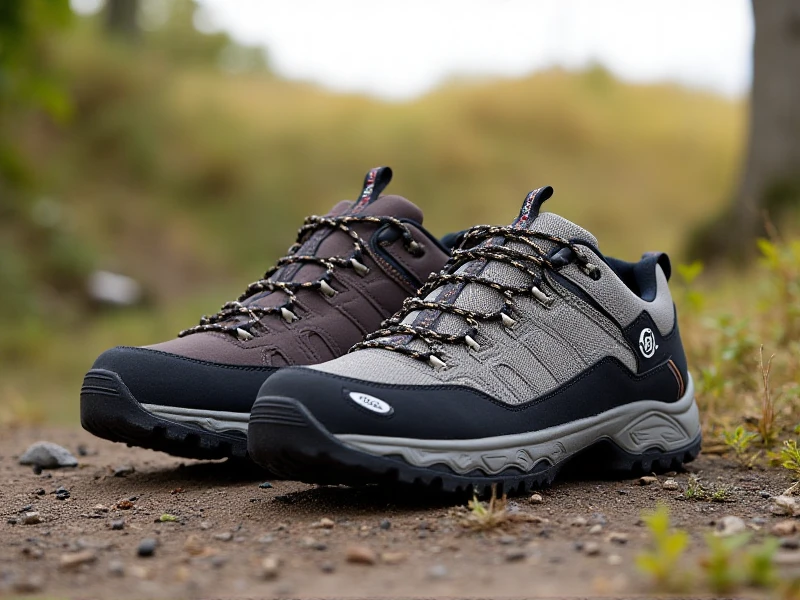Finding Your Perfect Pair: The Ultimate Guide to Women's Hiking Shoes
2025-06-04

Hitting the trails offers incredible freedom, stunning views, and a renewed connection with nature. But nothing derails an adventure faster than uncomfortable or unstable footwear. Choosing the right pair of women's hiking shoes isn't just about style; it's fundamental to your safety, enjoyment, and performance on every hike. Let's navigate the terrain of finding your ideal match.
Why Women-Specific Hiking Shoes Matter
It's not just about smaller sizes or different colour palettes. Women's feet often have distinct characteristics:
1. Narrower Heels: A snug heel cup prevents excessive slipping and blisters, improving ankle stability.
2. Higher Arches: Cushioning and support are tailored differently to accommodate the typically higher arch structure.
3. Foot Volume & Width: Women's boots often have a proportionally narrower forefoot compared to men's counterparts built on a wider last.
4. Lower Instep: Design accounts for this to prevent uncomfortable pressure points.
5. Lighter Weight: Recognizing women generally carry less overall mass, shoes are lighter without sacrificing durability. Choosing boots designed specifically for women's hiking shoes addresses these nuances, translating to comfort that lasts for miles.
Key Features to Prioritize
Beyond the perfect fit (which is absolutely non-negotiable!), focus on these essential features:
Trail Type & Ankle Support:
Low-Cut Trail Shoes: Ideal for well-maintained trails, day hikes with light packs. Offer maximum flexibility, lighter weight, and great comfort. (e.g., Salomon X Ultra, Merrell Moab Speed).
Mid-Cut Boots: The best all-rounder for women's hiking shoes. Provide crucial ankle support for uneven terrain, moderate backpack loads, and multi-day adventures. Offer protection from rocks and roots. (e.g., KEEN Targhee, HOKA Anacapa Mid).
High-Cut Boots: Best for rugged, technical terrain, heavy backpacking loads, or if you require maximum ankle stabilization.
Waterproofing: Breathable waterproof membranes like GORE-TEX are essential for wet conditions, crossing streams, or damp trails. For dry climates and desert hiking, prioritize breathable non-waterproof options.
Traction: Look for aggressive, multi-directional lugs and a tough rubber outsole compound (like Vibram® Megagrip). The lug pattern and depth should match the terrain – deep lugs for mud, varied lugs for rock.
Protection & Support:
Stiff Shank: Provides torsional stability on rocky terrain.
Rock Plate: Shields your foot from sharp rocks underfoot.
Toe Cap: Rubber reinforcement protects toes from stubs and impacts.
Midsole Cushioning: EVA foam or proprietary compounds (like HOKA's CMEVA) absorb impact. Balance cushioning with stability.
Weight: Generally, lighter shoes are more energy-efficient on long distances, while heavier boots offer better protection and support for tough loads. Find your women's hiking shoes sweet spot.
Durability: Cordura panels, synthetic overlays, and quality stitching ensure your boots withstand the miles.
Breaking In & Care: Essential Steps
New women's hiking shoes need careful break-in to prevent painful blisters:
1. Wear Indoors: Start with short sessions around the house with your hiking socks.
2. Short Walk: Progress to short walks in the neighborhood.
3. First Hike: Keep your initial hike on easy terrain and relatively short.
4. Spot Hotspots: Pay attention to any friction points; use blister patches preemptively if needed.
Maintaining Your Investment:
Clean Regularly: Remove dirt and mud after hikes with a soft brush and damp cloth. Avoid direct heat drying; let them air dry.
Re-Waterproof: Periodically treat waterproof boots with specific sprays or cleaners designed for their membrane. For leather boots, use conditioners.
Inspect: Regularly check laces, eyelets, stitching, and tread wear.
Finding "The One": Fitting Tips
Shop In the Afternoon: Feet swell throughout the day.
Wear Hiking Socks: Bring the specific thickness of sock you plan to use.
Leave Wiggle Room: Ensure at least a thumb's width of space between your longest toe (often the second toe) and the end of the boot. Your toes shouldn't jam forward on downhill sections.
Walk Steep: Many outdoor retailers have ramps. Walk both up and down to test heel hold and toe box room.
Test Width & Volume: The boot should feel snug, secure (like a firm handshake), but never painfully tight across the forefoot or instep. Ensure your foot doesn't slide sideways.
Different Brands Fit Differently: Don't assume your size in one brand applies to all. Brands known for great women's hiking shoes like Salomon, Merrell, Oboz, KEEN, La Sportiva, and Altra often have distinct feel profiles.
Top Picks & Trends for Women
Innovation is constant! Trending features include:
Lightweight Durability: Advances in materials make boots stronger yet lighter.
Enhanced Traction Systems: Technologies like Salomon's Contagrip®️ push the limits of grip.
Superior Cushioning: Brands like HOKA bring trail-running comfort to hiking footwear.
Sustainability: Brands increasingly use recycled materials in uppers and laces.
Popular & Reliable Models:
Lightweight Trail Runners: HOKA Speedgoat, Altra Lone Peak
Stable Low/Mid Hikers: Oboz Sawtooth Low/II Mid, Merrell Moab 3 Low/Mid
Supportive Waterproof Mids: Keen Targhee III Mid Waterproof, Salomon X Ultra Peak Mid GTX
Rugged Boots: La Sportiva Nucleo High II GTX (for serious terrain/large loads)
Investing time in finding the perfect women's hiking shoes is investing in adventure. The right pair empowers you to explore confidently, comfortably, and safely. Prioritize fit, support, and the terrain you tackle. With boots tailored to your feet, the trail ahead is yours to conquer. Happy trails!
Category: